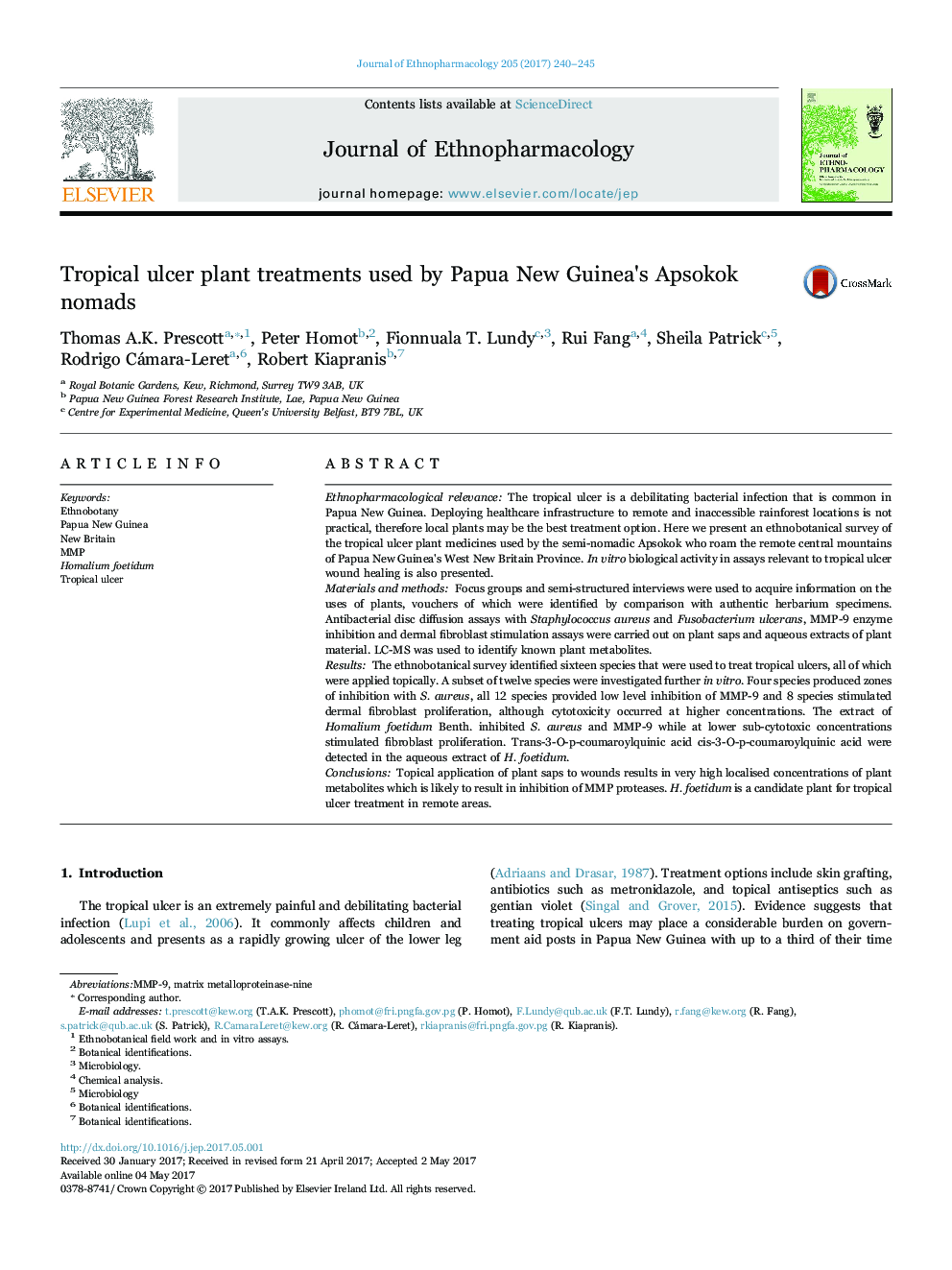| کد مقاله | کد نشریه | سال انتشار | مقاله انگلیسی | نسخه تمام متن |
|---|---|---|---|---|
| 5556088 | 1560357 | 2017 | 6 صفحه PDF | دانلود رایگان |

Ethnopharmacological relevanceThe tropical ulcer is a debilitating bacterial infection that is common in Papua New Guinea. Deploying healthcare infrastructure to remote and inaccessible rainforest locations is not practical, therefore local plants may be the best treatment option. Here we present an ethnobotanical survey of the tropical ulcer plant medicines used by the semi-nomadic Apsokok who roam the remote central mountains of Papua New Guinea's West New Britain Province. In vitro biological activity in assays relevant to tropical ulcer wound healing is also presented.Materials and methodsFocus groups and semi-structured interviews were used to acquire information on the uses of plants, vouchers of which were identified by comparison with authentic herbarium specimens. Antibacterial disc diffusion assays with Staphylococcus aureus and Fusobacterium ulcerans, MMP-9 enzyme inhibition and dermal fibroblast stimulation assays were carried out on plant saps and aqueous extracts of plant material. LC-MS was used to identify known plant metabolites.ResultsThe ethnobotanical survey identified sixteen species that were used to treat tropical ulcers, all of which were applied topically. A subset of twelve species were investigated further in vitro. Four species produced zones of inhibition with S. aureus, all 12 species provided low level inhibition of MMP-9 and 8 species stimulated dermal fibroblast proliferation, although cytotoxicity occurred at higher concentrations. The extract of Homalium foetidum Benth. inhibited S. aureus and MMP-9 while at lower sub-cytotoxic concentrations stimulated fibroblast proliferation. Trans-3-O-p-coumaroylquinic acid cis-3-O-p-coumaroylquinic acid were detected in the aqueous extract of H. foetidum.ConclusionsTopical application of plant saps to wounds results in very high localised concentrations of plant metabolites which is likely to result in inhibition of MMP proteases. H. foetidum is a candidate plant for tropical ulcer treatment in remote areas.
197
Journal: Journal of Ethnopharmacology - Volume 205, 9 June 2017, Pages 240-245